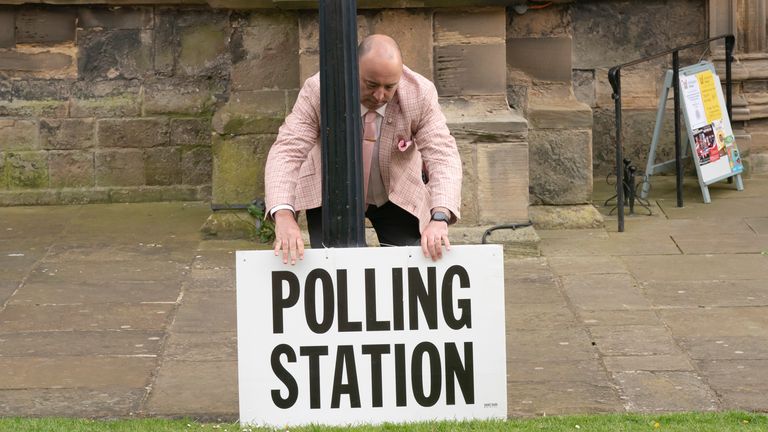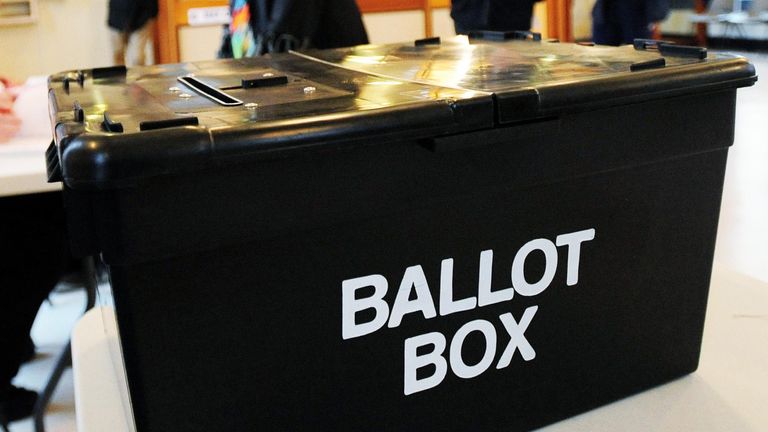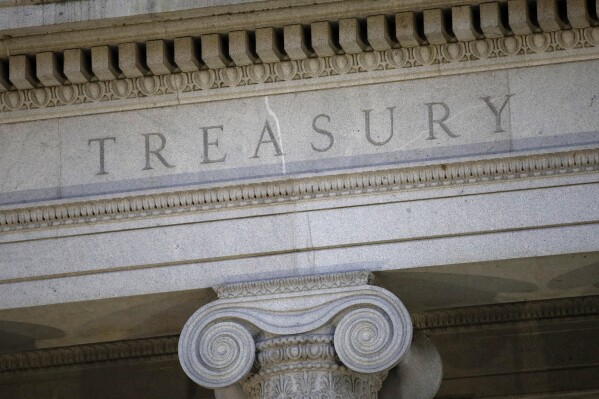The general election is underway - and it will no doubt be hard fought.
Attention will turn to key battlegrounds, swing votes and the potential of coalitions in the coming months, and so now is the right time to learn all the key terminology.
Here, Sky News details some of the most important words and phrases you might spot...
Battleground
This refers to a seat which one - or more - political parties have earmarked as a potential loss or gain. Typically, these areas will see a significant amount of campaigning in the run-up to polling day. They tend to be marginal seats, or those where MPs have resigned.
Constituency
This is a geographical area where voters elect a single MP to represent them in the House of Commons. At present, there are 650 parliamentary constituencies in the UK.

Coalition
When two or more parties form a government together because no one political party has the majority of seats in parliament. In 2010, the Conservatives and Liberal Democrats formed a coalition government. Tory leader David Cameron was elected prime minister and Lib Dem leader Nick Clegg became his deputy.
Confidence and supply
This is not quite the same as a coalition, but still requires a party to strike a deal with another to form a government. Confidence deals, according to the Institute of Government, "typically make clear that the support party or parties must back the government on explicit confidence votes, and votes on budgets and supply (government spending). In return, the support parties are given government support for specific policy priorities."
Exit poll
Put simply, this is a poll of voters taken immediately after they have left polling stations. It asks which way they voted, and can give a good indication of the result in certain areas. It is published at 10pm on voting day when the polls close, and gives an indication of how the results could go.
First past the post
This is the electoral system used for the selection of MPs in the House of Commons. Voters select a single candidate for their constituency, and the person with the most votes wins.
Hung parliament
This is when a general election ends without a single political party having the majority of seats in the House of Commons. This situation can lead to a coalition or confidence and supply agreement - as explained above.
Majority
The easiest way for a political party to form a government is to win the majority of seats in parliament. There are 650 MPs in the Commons. Therefore, to have an overall majority, a party must win over half of these seats - at least 326.

Marginal
This is a constituency seat which is won by only a small margin, usually 10% or under. This means that only a small change in voter habit could see a party lose the seat - and this could be critical. Marginal seats are viewed as the "battleground" of an election.
Minority government
In a minority government, the governing party has the most seats - but still less than half the total. In the UK, this would mean the party has less than 326 seats in the House of Commons.
Swing vote
A swing voter is a person who does not have a strong political affiliation, and could give their vote to any number of parties on polling day. These voters can be critical to the outcome of an election, particularly in marginal seats.
Tactical voting
This is when a voter chooses a candidate they would not normally support, in a bid to prevent another candidate from winning.
Read more about the general election:
What happens now an election has been called?
Find your new constituency and how it's changed
How boundary changes make Starmer's job harder
The MPs who are standing down
By-election
A by-election is when a seat in the House of Commons becomes vacant between general elections.
Manifesto
This is a public declaration of policy published by a political party ahead of a general election.
Red wall
This is a term used to describe constituencies largely in the north of England and in the Midlands which have historically supported the Labour Party. At the 2019 general election, a significant number of these "turned blue" - or supported the Conservative Party.
Disclaimer: The copyright of this article belongs to the original author. Reposting this article is solely for the purpose of information dissemination and does not constitute any investment advice. If there is any infringement, please contact us immediately. We will make corrections or deletions as necessary. Thank you.



